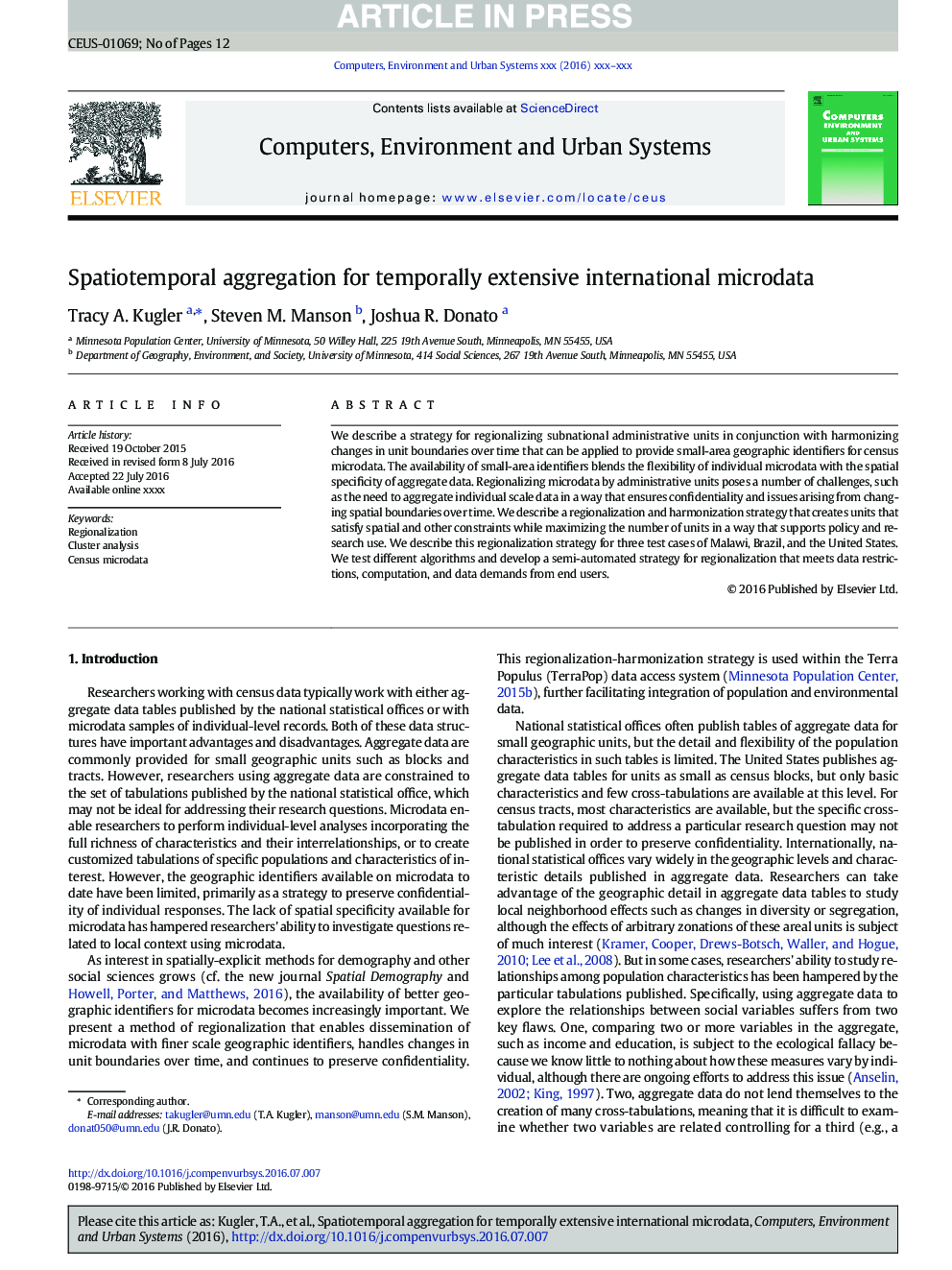| Article ID | Journal | Published Year | Pages | File Type |
|---|---|---|---|---|
| 4965170 | Computers, Environment and Urban Systems | 2017 | 12 Pages |
Abstract
We describe a strategy for regionalizing subnational administrative units in conjunction with harmonizing changes in unit boundaries over time that can be applied to provide small-area geographic identifiers for census microdata. The availability of small-area identifiers blends the flexibility of individual microdata with the spatial specificity of aggregate data. Regionalizing microdata by administrative units poses a number of challenges, such as the need to aggregate individual scale data in a way that ensures confidentiality and issues arising from changing spatial boundaries over time. We describe a regionalization and harmonization strategy that creates units that satisfy spatial and other constraints while maximizing the number of units in a way that supports policy and research use. We describe this regionalization strategy for three test cases of Malawi, Brazil, and the United States. We test different algorithms and develop a semi-automated strategy for regionalization that meets data restrictions, computation, and data demands from end users.
Keywords
Related Topics
Physical Sciences and Engineering
Computer Science
Computer Science Applications
Authors
Tracy A. Kugler, Steven M. Manson, Joshua R. Donato,
